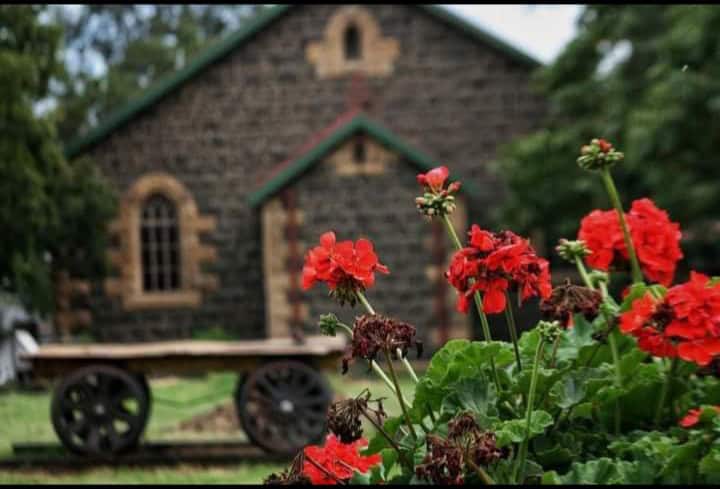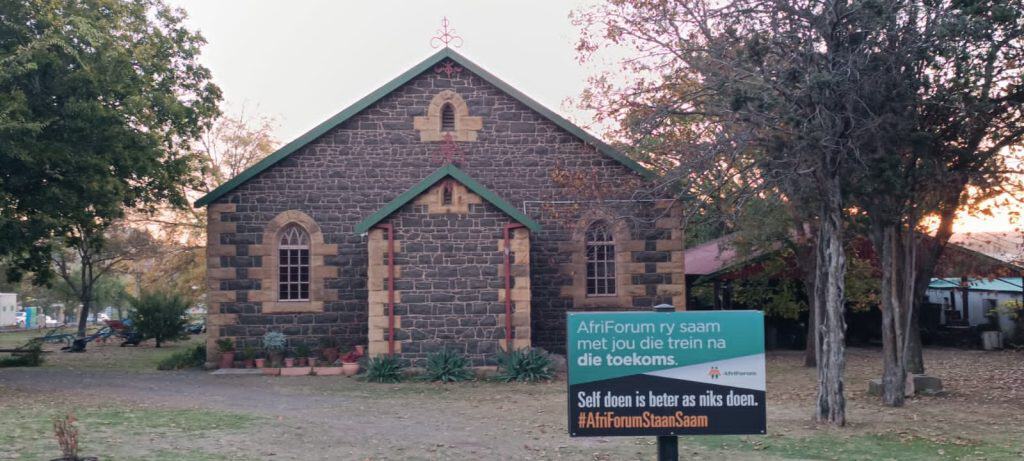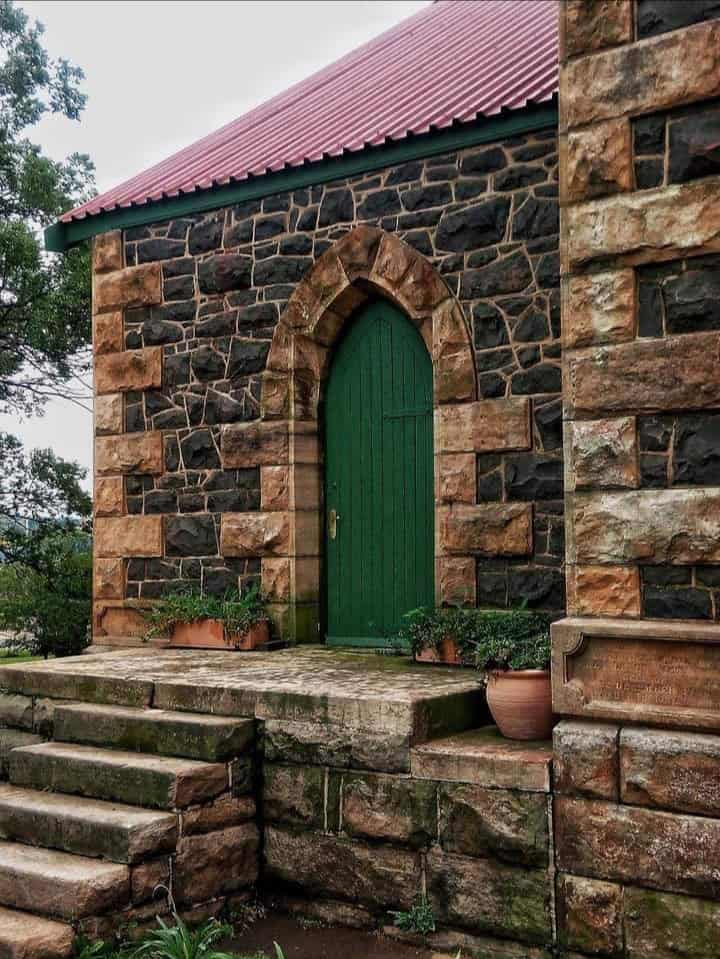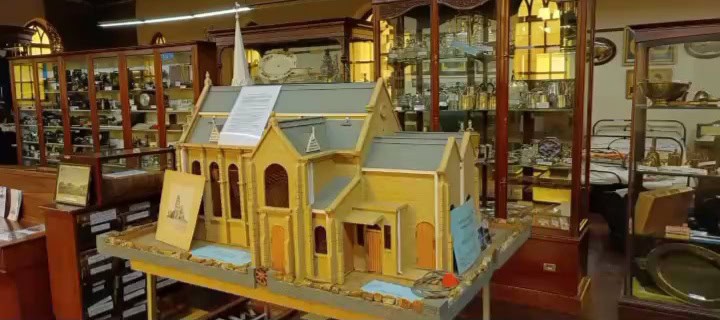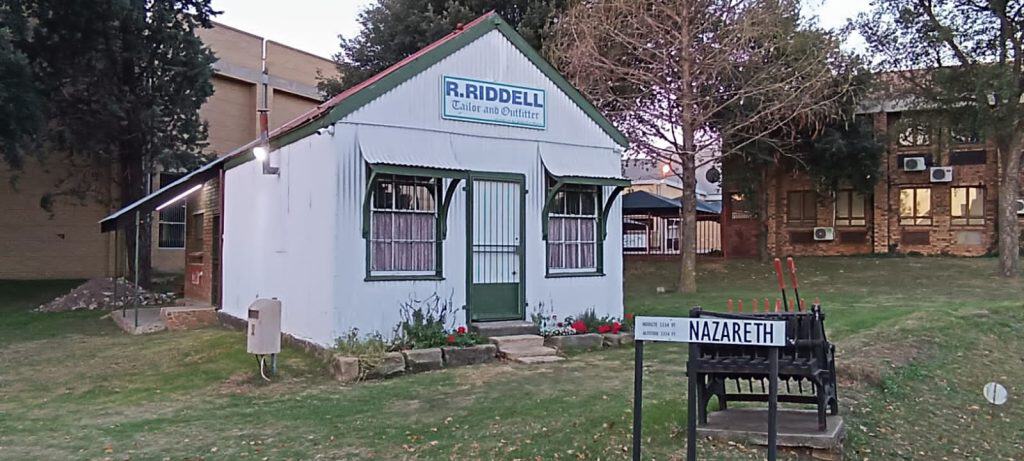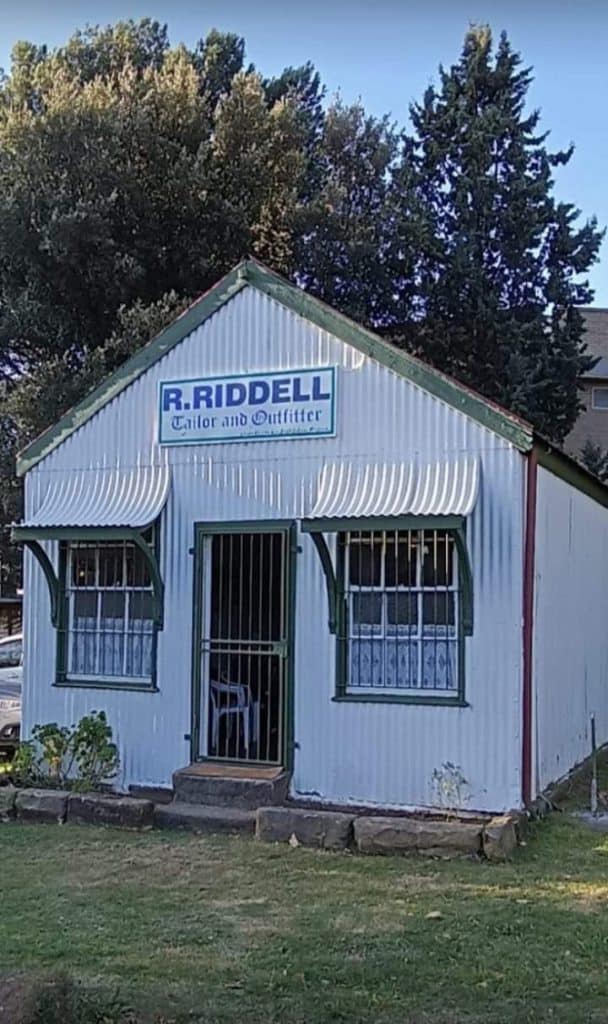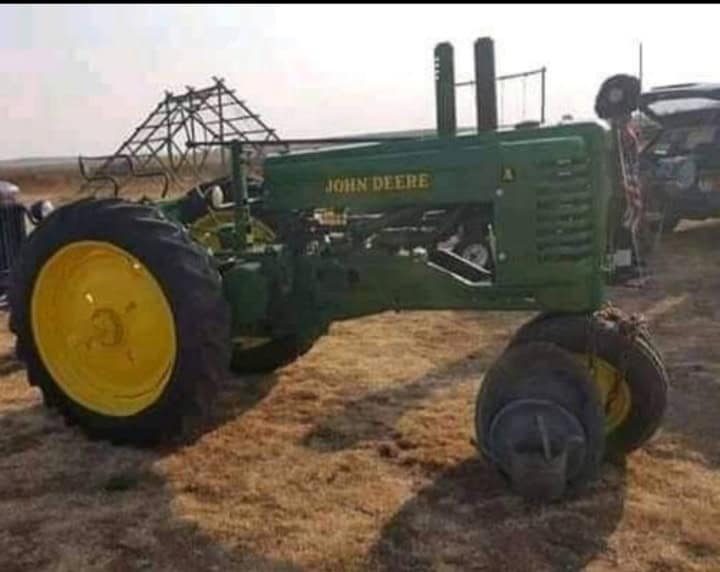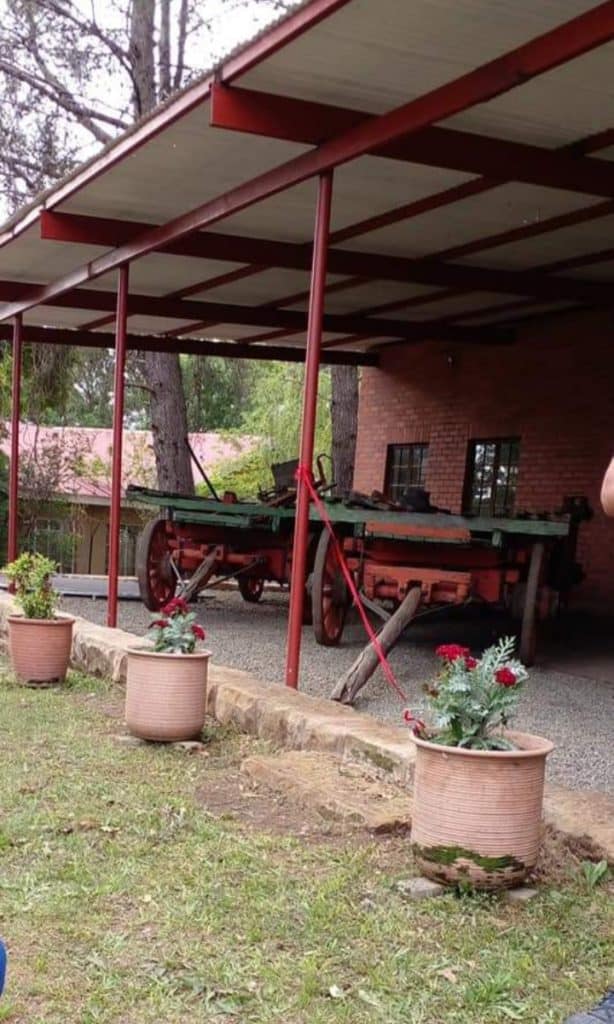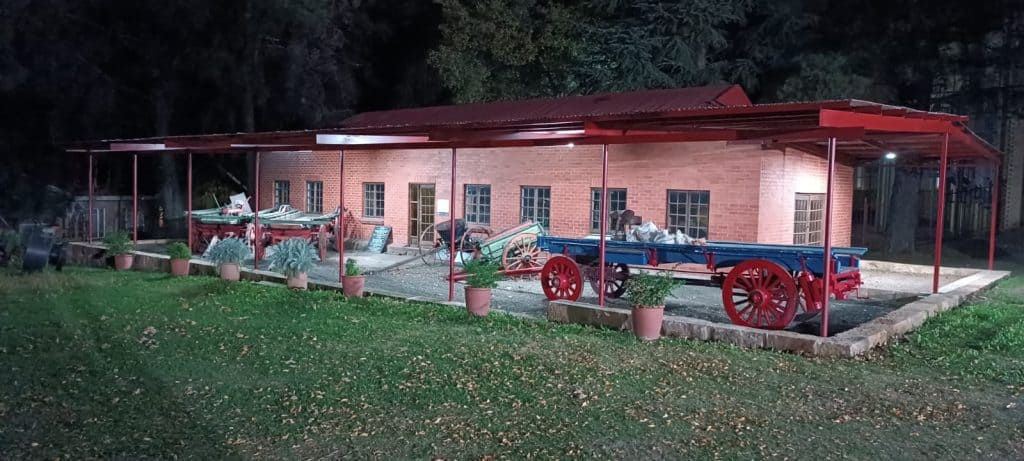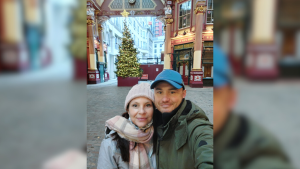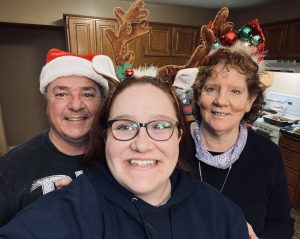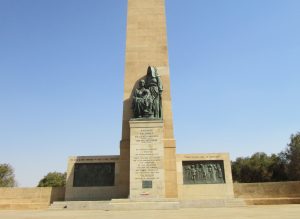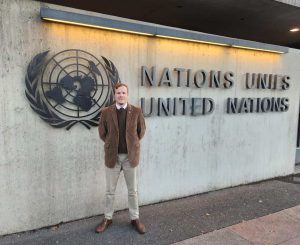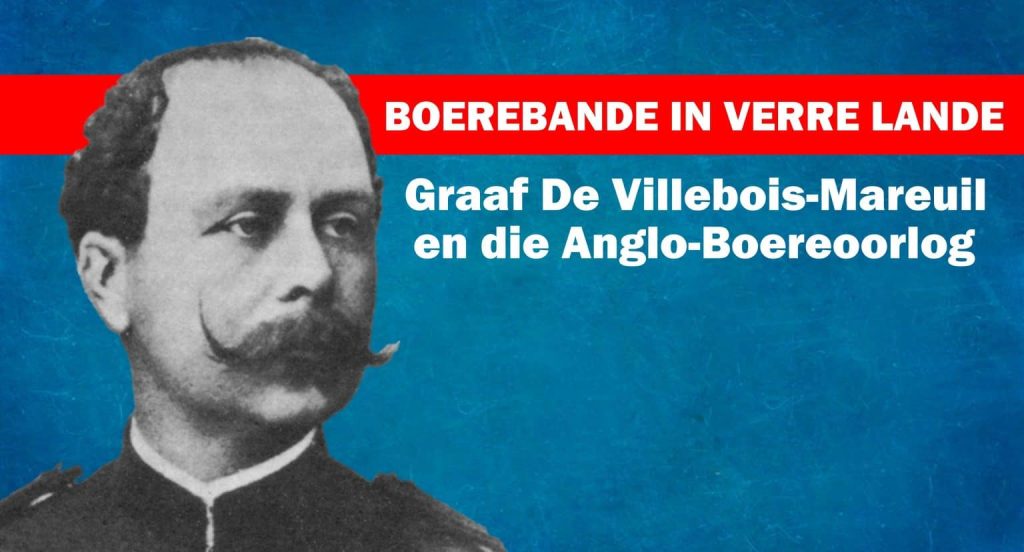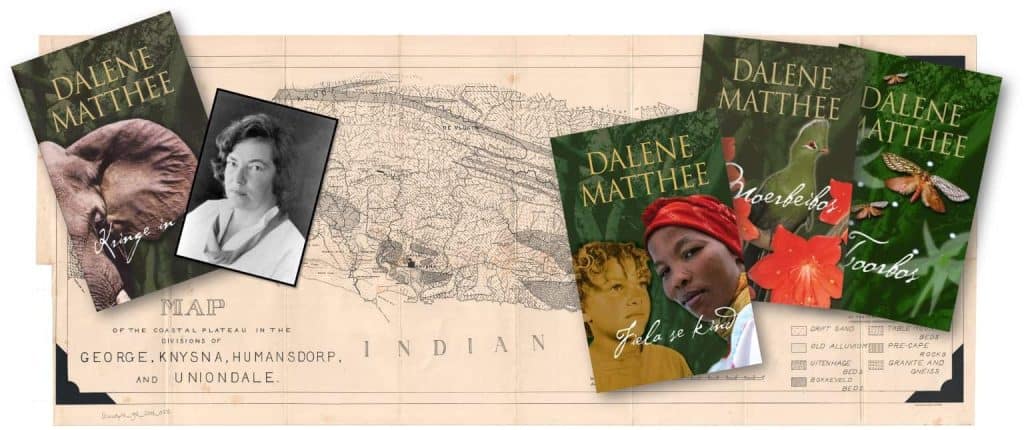By Alana Bailey
In AfriForum’s Heritage Highlights series, we shed light on heritage landmarks in the country where communities step in themselves to preserve our unique cultural and historical legacy. In this instalment, we are visiting Bethlehem Museum in the beautiful Free State.
We are talking to Maritha Swanepoel. She recounts how a group of people who are passionate about history and its preservation, got together on 21 March 2013 and founded “The Friends of the Museum Association” to help the Bethlehem Museum Trust. She joined as a Friend, but is also a Trustee of the Bethlehem Museum Trust.
Alana: Thank you for the opportunity to learn more about this beautiful museum! Please tell us more about its history?
Maritha: The Nederduits Gereformeerde Sendingkerk (only the second mission church in the Free State) was built from 1906 to 1910 with blue ironstone and sandstone from the adjacent quarry. Congregations in the Cape Colony, the local farming community and parishioners donated towards its erection. After a new mission church had been completed in Bohlokong in 1963, the city council purchased the old church building and the site on which it is located. In 1964 with the celebrations of the centenary of Bethlehem, it was officially put into use as a museum. The ideal was that it had to promote all the main language and cultural groups of Bethlehem and surroundings. Rich Venter was the first curator. He collected items for the Museum by driving his DKW from farm to farm. He recorded the artefacts and all related historical details, marked and exhibited them in the Museum.
Today there are more buildings on the site. The Riddell Building (named after the first tailor in Bethlehem who used it as a shop) was purchased by the city council in the early 1970s and moved from the town centre to the museum site with a tractor and trailer. In 1989, in the run-up to the town’s 125-year anniversary celebrations, the museum grounds were enlarged and the red brick building, Die Waenhuis, erected.
The site, main building and Die Waenhuis are the property of the municipality. However, the artefacts belong to the Bethlehem Museum Trust, which was founded in 2008. These items therefore are very safe. In other towns, municipalities sold museum artifacts to pay off their debts.
Structures erected by the Trust on the site, for example the kitchen and ablution building, known as Die Stoep, as well as the steel structure that will be used as a cultural centre, are also the Trust’s property.
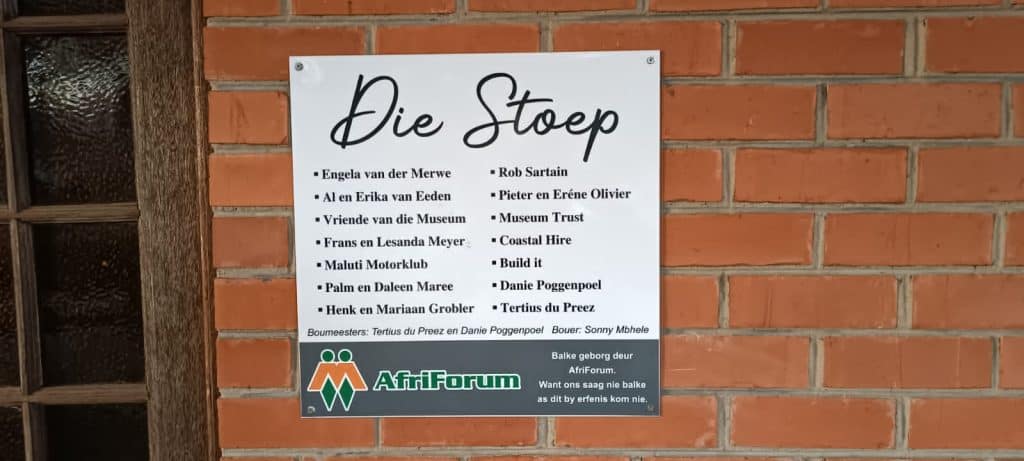
Alana: What is the theme or focus of the Museum?
Maritha: It is “Where we secure the future of our past”. We focus on the multicultural lifestyle of Bethlehem’s residents’ ancestors and the Museum is inclusive of all cultures.
In 2016, the Trustees, Friends and other volunteers, with minimal funds at their disposal, had the Museum painted, as well as the roof and floors repaired. With the help of experts from the National Museum in Pretoria and the War Museum in Bloemfontein, Bethlehem Museum was divided into themes, for example military items, textiles and children. Theme curators (all volunteers) were appointed, and a digital system was implemented. Inventory lists were compiled for every theme and every theme curator was given a list of all artefacts in their section to ensure control.
Alana: What usually excites or surprises visitors to the Museum most of all?
Maritha: The artefacts that are so well-preserved surprise them again and again. For example, the impressive clothing display case with its rounded glass panels (imported in 1903) that had been used in the “James T Strapp, Draper, Outfitter” store for 77 years. The Strapp family donated it to the Museum when the store closed in 1980. Under the military theme, items from the various wars are exhibited, such as items made by the prisoners of war in Ceylon, as well as from the South African Defence Force up to 1994 and the disbanded commando. Bethlehem Museum is also in possession of a complete set of framed photographs that spans from the first town management of 1876 to the municipal mayors up to 1994.
The carriages and vehicles are also always a big drawcard and include a wagon from 1876, hooded wagon from 1910, hearse bought in 1904 in Thaba Nchu by the Bethlehem City Council, and 1949 John Deere tractor. The 1949 Mack Fire Truck has been beautifully restored and is used annually to transport Santa and deliver presents. It always causes great excitement for the children, as well as everyone else involved.
On a lighter note: When classifying the artefacts we found a copper item that was described as a “grease pump”. One of the Friends, Septimus de Klerk, had a look at it. He remarked that it is not a grease pump with which you “grease” a car or tractor, but rather intended for another kind of use, as it is an enema syringe. Google confirmed that Septimus is correct!
There are many more interesting artefacts on display at the Museum and the community is invited to come and explore themselves!
Alana: Tell us more about the Trustees’ and Friends’ activities?
Maritha: We function as a joint team when we embark on community projects. Together with the Trustees, the members perform a service as volunteers to keep the facilities clean, generate funds, collect artefacts, organise exhibitions and improve facilities. They take turns to welcome visitors to the Museum and provide guided tours. They are also actively involved in marketing the Museum in the media.
People from as far as Pretoria, Paarl, Wellington and even England with a connection to Bethlehem are regularly assisted by passionate volunteers in their search for the history of their ancestors. Palm Maree and Erika van Eeden are usually the ones who help with these requests.
Alana: Bethlehem Museum is not just a repository for history. I believe it is also a fully-fledged community centre. Please tell us about its facilities and who may use them?
Maritha: There is close cooperation with all the cultural organisations in Bethlehem. Before the Riddell Building could be rented out, a kitchen and ablution facilities had to be added. In 2019/2020 this was done with the help of sponsors and donations. This building is now known as Die Stasiekafee and is used for museum functions. It can also be let out. Cultural organisations such as the Rapportryers, ATKV, Moths, Maluti Motor Club, Ladies of the WAU, residents of retirement homes and churches regularly rent it to host meetings and small functions there. The Bethlehem Round Table used Die Waenhuis in 2023 for an international function. Community functions are also regularly held on the site, such as a bring-and-braai where all can exchange ideas and socialise.
In January 2024, a group of Japanese tourists and their international tour guide visited the Museum. They could not stop talking about artefacts that they recognised as things that had also been used by them, especially the porcelain.
Vandalism and damage to historic buildings and cemeteries in Bethlehem (especially at the British War Cemetery where the iron crosses were regularly stolen) started getting out of hand. Contact was made with the Commonwealth War Graves Commission and the Heritage Association of South Africa. It was impossible for those involved at the Museum to deal with this as well and thus, in November 2019, the Bethlehem Heritage Association was founded to attend to these issues.
In 2023, an entire sandstone house and barn’s material was donated to the Museum. There were solid wooden beams, floors, windows, doors, and corrugated iron sheets. The buildings were dismantled and transported for safekeeping. The corrugated iron sheets were used to build a stoep in front of Die Waenhuis to provide cover for the ox wagons. This area can also be used for functions now. The sandstone blocks and wooden beams will be used to cover the steel structure, which was erected in 2020, in order to transform it into a full-fledged cultural centre.
Alana: Do you have any functions that you host annually that the public can attend, for example on International Museum Day, or Heritage Day?
Maritha: Visits of school children are very high on the agenda. On 6 April, the arrival of Jan van Riebeeck is usually celebrated with a glass of champagne. To celebrate International Museum Day on 18 May 2024, the Museum will remain open to visitors for much of the day. This year it is on a Saturday and there will also be a bring-and-braai. On 25 May 2024, the Maluti Motor Club will once again host their annual car show here. As 2024 is a leap year, it was decided to host a Father’s Day dinner on 16 June 2024, instead of the annual Mother’s Day dinner and for Heritage Day (24 September 2024) a multi-cultural festival is being planned.
AfriForum, the Rapportryers, ATKV and Maluti Motor Club are regular sponsors of our projects.
Alana: What are the challenges faced by you, or that you had to face in the past?
Maritha: The Museum receives no subsidy from any authority. Theft and burglaries were rampant. It was also not safe for visitors and workers, because their cars were burgled in broad daylight. Various donations made it possible to install a camera system. The eastern and northern sections of the wire fences where the thieves gained access, were also replaced with a palisade fence and the site and people are much safer now.
The wiring of the museum building is very old and creates a risk. The next challenge is to raise sufficient funds to have it rewired.
Alana: If you could compile a wish list, what would it include?
Maritha: The rewiring of the museum building, to build a storage room at Die Waenhuis and to provide a floor and walls for the cultural centre.
Alana: If people have historical artefacts or documents that they would like to donate to you, who should they contact?
Maritha: Donations are most welcome. Rare items that are not old enough yet to be described as artefacts are also accepted and stored for future display. Potential donors are welcome to contact Tertius du Preez or me (Maritha Swanepoel). All donations are meticulously documented, labelled, and described before they are exhibited.
Alana: In which other ways can members of the public get involved to support you?
Maritha: Visit the Museum (the R10 entrance fee per person makes it possible to preserve the treasures of our ancestors), rent the Riddell Building for a minimal amount to host a function there, or join as a Friend and get involved as a volunteer.
Alana: Finally, what is your advice to anyone who wants to adopt and take care of a heritage landmark or site?
Maritha: If there is no museum in your town, start one. To promote the preservation of our cultural history, Bethlehem Museum is happy to help with the information required to establish new museums. For example, advice was provided in 2021 to the community of Paul Roux with the establishment of their private museum. They now have a very active museum that recreates the past every month with the use of vintage cars, horse-drawn carriages, etcetera. In April 2024 we also donated artefacts to the Settlers Museum in Limpopo.
Alana: Maritha and all your co-volunteers, we sincerely thank you for the great task that you perform with such zeal, enthusiasm and success! Good luck with your future activities and plans. AfriForum is more than happy to stay involved where we can be of help.
Contact details:
Tertius du Preez (Chairperson) – 082 889 4294; Maritha Swanepoel (Secretary) – 083 257 5488; or email mswannie42@gmail.com.
Photos: Tertius du Preez/ Vriende van Bethlehem Museum



